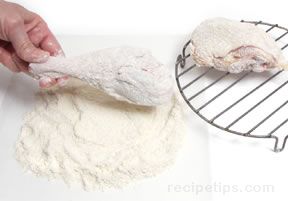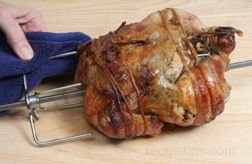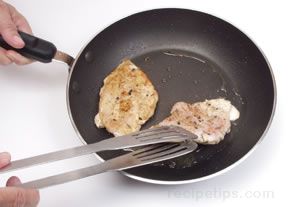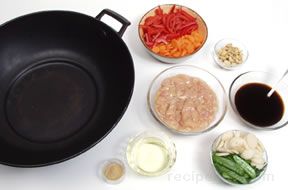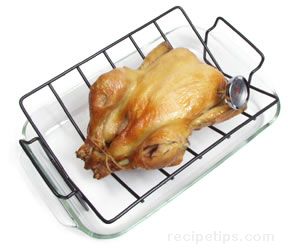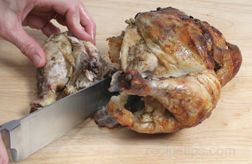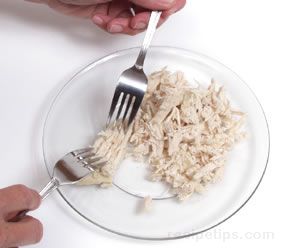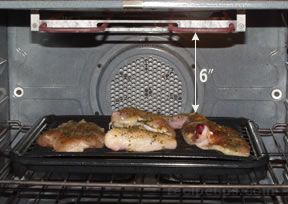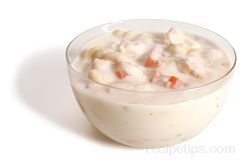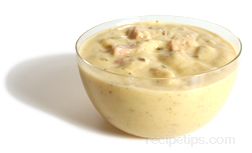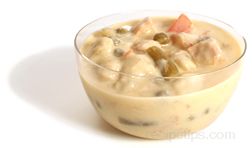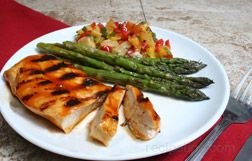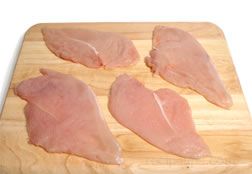|
Poaching is a healthy method of cooking chicken because no fat is added. It retains the chicken's flavor, tenderness and moisture through a gentle simmering process. Poaching is an especially good method to use when cooking chicken that normally has tougher meat, such as stewing hens and chicken that has a tendency to be a little dry, such as skinless breasts. Cooking by this method provides a very flavorful chicken because it draws additional flavor from the meat and bones as it cooks.
The poached chicken can be eaten as part of a main meal or used as an ingredient for salads, sandwiches, pot pies, and other dishes. The liquid, in which the chicken is poached, can also be used. It can be used as a broth or reduced to use in making a sauce to be served with the chicken.
|
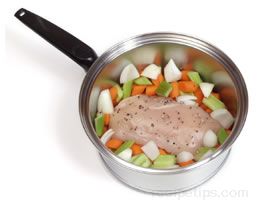
|
|
To poach, place the chicken in a saucepan or Dutch oven with the vegetables you are using. The chicken and vegetables should fit fairly tight in the pan. |
|
The chicken and vegetables should be completely covered with liquid. Do not use a pan that is too large, avoiding the use of too much water, which would result in a liquid that has a diluted flavor. The pan should be just large enough so that the liquid can move freely around the chicken. Add other flavorings, if desired. The liquid used for poaching can be water, stock or water with the addition of other ingredients such as wine or fruit juices.
|
|
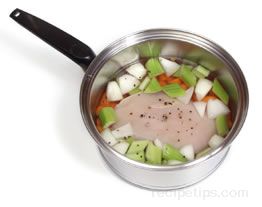 |
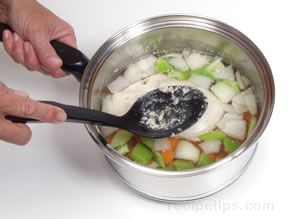 |
|
Bring the liquid to a boil and skim off the foam that forms on top, then reduce heat to low and partially cover. |
|
Partially cover and let liquid gently simmer until the chicken is finished cooking. Check for doneness by piercing the thickest areas of the meat and check to see that the juices run clear.
|
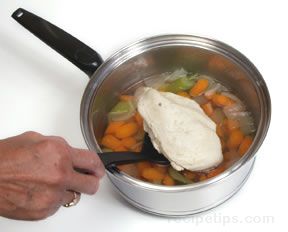 |
|
When done, remove the chicken and let it sit at room temperature to rest for approximately 15 minutes before cutting. This allows the juices to redistribute through the meat. |
When using the poaching method of cooking, it is important to bring the liquid to a boil and then lower the temperature so that the liquid is simmering very gently. The liquid should barely be moving with only a few bubbles breaking the surface occasionally, not bubbling as it does when boiling. Vigorous boiling will toughen the meat and make it stringy.
Poaching tips:
- For added flavor, season liquid with herbs, such as dried rosemary, sage, thyme, dill, or tarragon. Also, other flavorings, such as ginger, garlic and onion can be added.
- Rubbing the chicken with lemon juice and poaching in water containing lemon juice or white wine vinegar will help to keep the flesh of the chicken white when cooked.
- If the poached chicken is to be eaten cold or added to another dish, allow the meat to cool in the liquid to provide a moister texture. However, this procedure should be avoided in warm weather, because then the chicken should be cooled as quickly as possible and then refrigerated.
- After cutting the cooked chicken off the bones, return the bones to the liquid the chicken was cooked in and simmer longer to increase the flavor of the broth.
|











